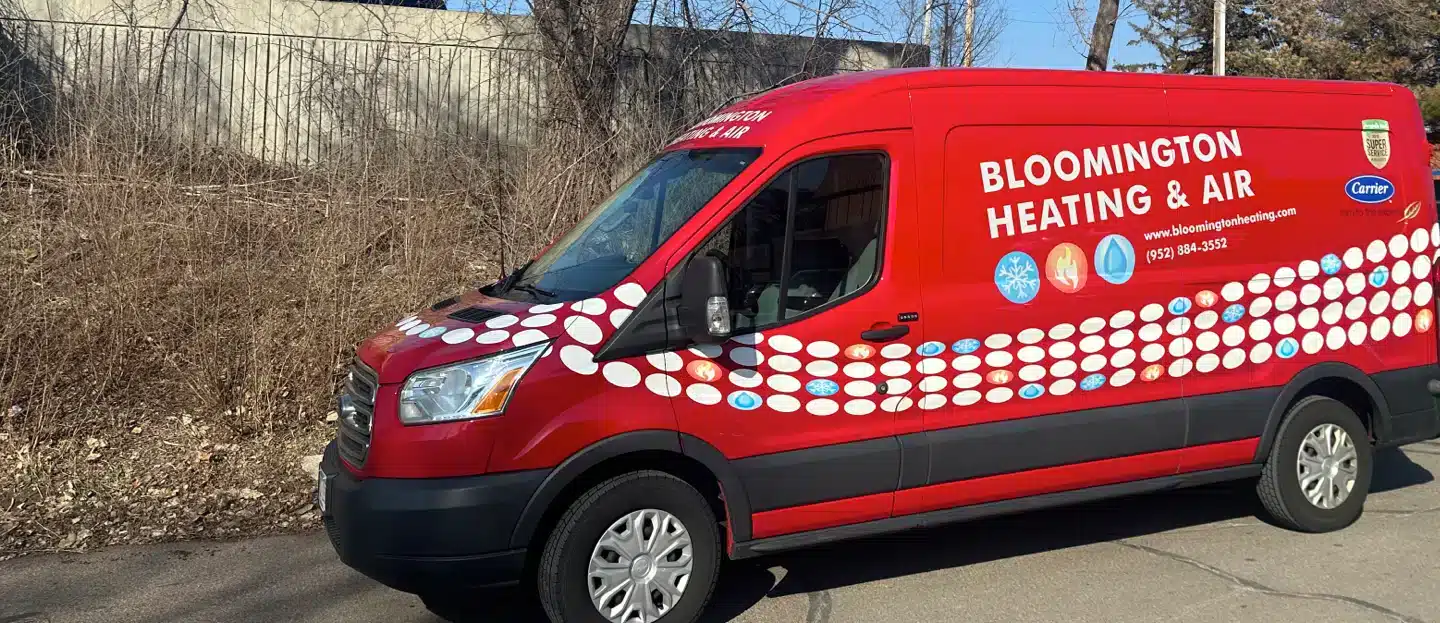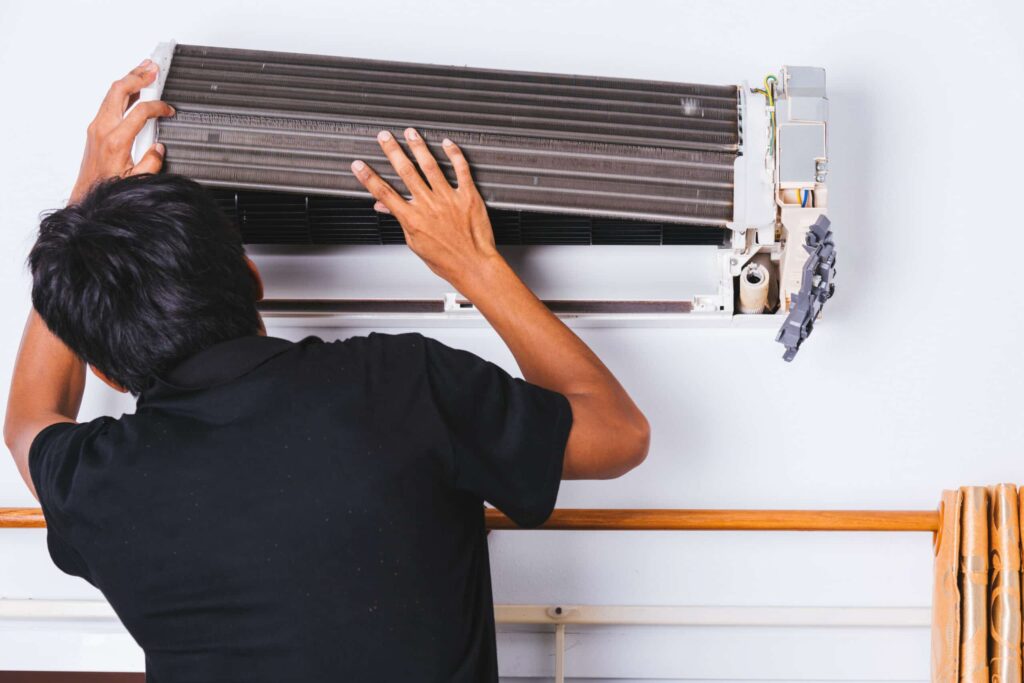
24/7 Emergency Phone Line
Family Owned & Operated
Licensed, Bonded & Insured
A common symptom of air conditioner problems is poor airflow from the HVAC unit. You may be dealing with HVAC airflow issues if you’ve noticed:
- Hot and cold spots throughout your home,
- Weak or no airflow coming from the vents in one or more rooms,
- Doors slamming by themselves,
- Whistling noises caused by pressure imbalance, or
- The air conditioner is working but not cooling.
Aside from any discomfort, ignoring poor airflow issues could lead to compressor failure, which could render the entire unit inoperable. However, if you address them promptly, most airflow issues can be relatively inexpensive to fix.
To help narrow down what might be causing poor airflow and how to fix it, the professionals at Bloomington Heating & Air have outlined some common areas to inspect. If you’re dealing with decreased AC airflow, contact our HVAC company to schedule air conditioning services for your home or business!
Blocked Condenser Unit & Dirty Coils

Most condenser units can be found either outside or in a mechanical room. If the condenser is blocked, the reduced airflow can cause the system to overheat, which in turn reduces airflow throughout the building. Outdoor units are more likely to become obstructed by debris, such as leaves and dirt. However, indoor units can also become clogged if supplies and other equipment surround it.
Make sure the unit’s clearance space is at least two feet around and above it and that the condenser coils are clean of dust, dirt, and other debris, as this can also impact the unit’s efficiency.
Clogged Filter
The HVAC filter is responsible for pulling particles like dust and other allergens from the air, but over time it can become clogged. A clogged filter can reduce indoor airflow if it’s not changed regularly. If the air filter is relatively new and still clean, check to ensure that you are using an air filter with the correct Minimum Efficiency Reporting Value (MERV) rating for your unit.
While air filters with a higher MERV rating can filter out more air pollutants, they also decrease the air flowing through your unit. If you’re not sure what MERV rating is right for your unit, check with an experienced HVAC technician.
Blocked Or Damaged Ducts
Once air gets past the filter, it flows through the ducts to deliver cool air to each room. Any dust that isn’t captured by the filter is now in the ductwork. Narrow ducts or ducts that haven’t been cleaned out for a long time can become clogged quickly, reducing airflow. There’s also the possibility that rodents or birds have created homes in the ducts, especially if it’s an older building.
Punctures and structural damage can also cause leaky air ducts, allowing air to escape into the walls rather than being funneled into the building. You may need to schedule AC repair services to clear blockages and address any other issues that could be contributing to poor airflow.
Obstructed Vents Or Slow Fans
Ducts deliver air through vents. But, if the vents are blocked, air won’t make it through. Vents around the building should have at least six inches of space around them. Large furniture such as couches, filing cabinets, or bookshelves should never be placed in front of vents, even if it’s in an attempt to keep that specific area or room warmer.
If all your vents are open but still not blowing enough air, it could be an issue with the fan’s motor. Also, depending on the location of the fan, such as in a restaurant, the fan may become coated in grime, which can slow the speed of the fan. In this instance, it’s best to seek out high-quality, efficient air conditioning services.
Outdated HVAC Components
A good HVAC design requires more than just connecting ducts and wires. If the design wasn’t originally maximized or if you’ve remodeled without accounting for the HVAC design, your system may not be on par. The thermostat and refrigerant levels should also be considered.
Poor airflow can also be caused by a unit that’s the wrong size for the building. Older units may be too large for the building, causing it to run inefficiently, leaving too much humidity in the air and making it feel stuffy. It’s best to consult with a professional to ensure your HVAC unit and design are right for your home or business.
If you can’t figure out what’s causing poor airflow in your home, contact the team at Bloomington Heating & Air. Our HVAC technicians provide 24-hour emergency air conditioning repairs to get you back to a comfortable temperature ASAP!
